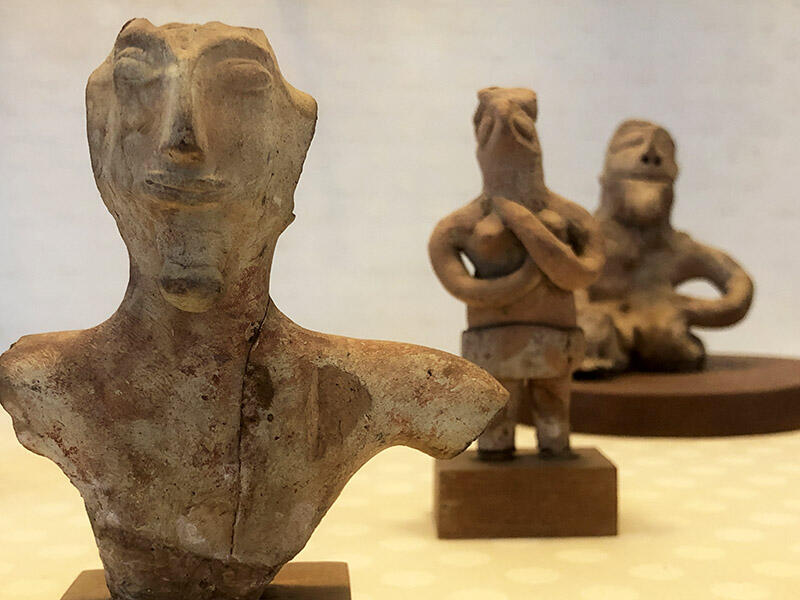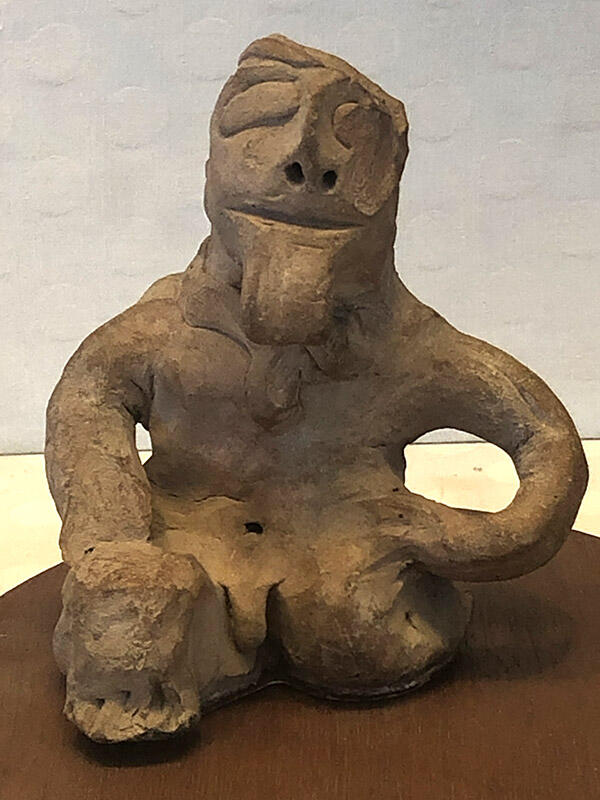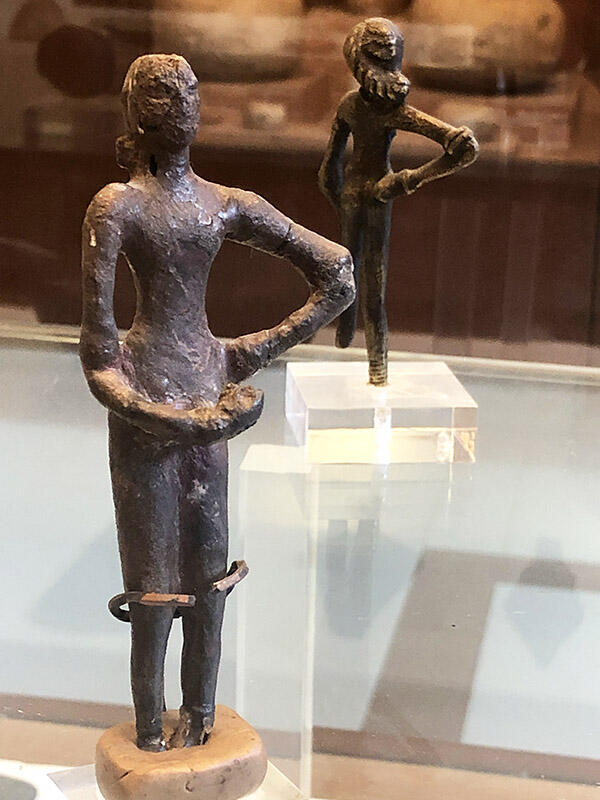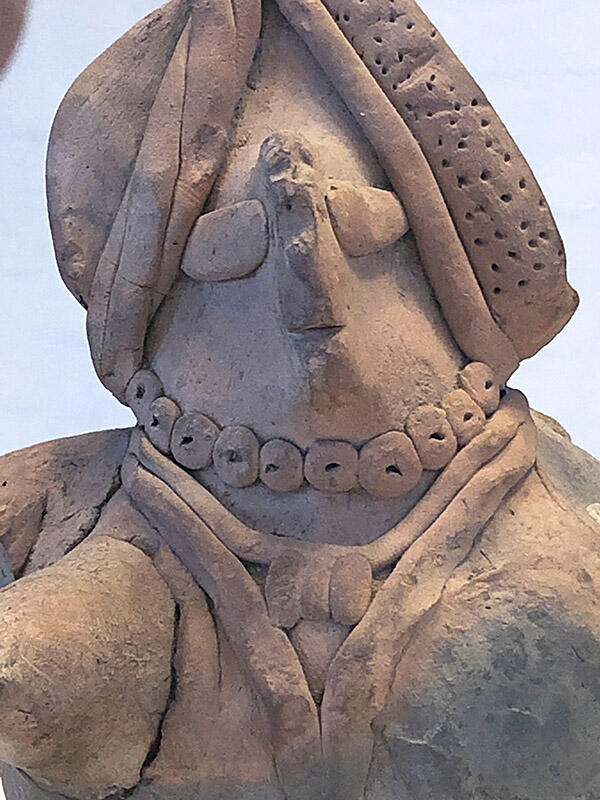December 17th, 2019
On a visit earlier in 2019 to the National Museum of Pakistan in Karachi, an iPhone camera was a welcome companion in trying to bring out something of the character of Indus figurines resident within the large glass vitrines. The first shown [Image 1] here is described by Mark Kenoyer as a "male figurine or deity with goatlike beard [wearing] a horned headdress that has broken. Almond-shaped eyes and a serene mouth are distinctive of a similar horned, beared deity" (Mohenjo-daro DK 7508, Ancient Cities, p. 224). The terracotta male figurine behind him, shown alone in [2], also bearded, displays real attitude, as if emerging from hand-finished terracotta.
The third image [3] is of a rare bronze sculpture from Mohenjo-daro, much less well-known than the dancing girl replica behind her [the original is in Delhi]. Dr. Kenoyer writes of this figurine "the hair is tied in a horizontal bun hanging low on the back of the neck and traces of long almond-shaped eyes are visible. Many bangles adorn the upper left arm and a few bangles are indicated above the right elbow. Because these bronze figurines are not copies of terracotta figurines, they may have been made for a specific ethnic community or perhaps used in special rituals that required bronze votive statues. But, unlike terracotta figurines that break and are discarded, bronze can be melted and recycled for other objects. The few bronze sculptures recovered reflect a high level of skill in modeling and lost-wax casting, a well-established [tradition] in the first cities that continues to the present throughout the subcontinent" (Ancient Cities, p. 135).
The final image [4] is of a terracotta female figurine, one of many such figurines found at Mohenjo-daro and Harappa, and for whom Shereen Ratnagar, building on work by others including Alexandra Ardelanu-Jansen and Sharri Clark, argues in her recent book The Magic of the Imagewas probably a cultic object used by women in some sort of domestic rituals, meant not to represent a "mother goddess" as much as a specific person.
- Log in to post comments








